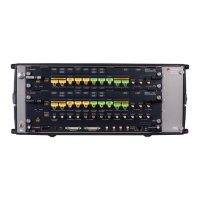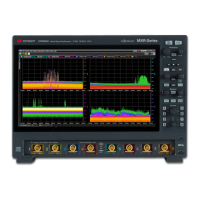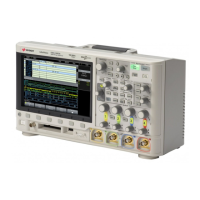Digital Channels 7
Keysight InfiniiVision 3000T X-Series Oscilloscopes User's Guide 147
In addition to the common mode voltage, longer ground returns also degrade the
pulse fidelity of the probe system. Rise time is increased, and ringing, due to the
undamped LC circuit at the input of the probe, is also increased. Because the
digital channels display reconstructed waveforms, they do not show ringing and
perturbations. You will not find ground problems through examination of the
waveform display. In fact, it is likely you will discover the problem through random
glitches or inconsistent data measurements. Use the analog channels to view
ringing and perturbations.
Best Probing Practices
Because of the variables L, di, and dt, you may be unsure how much margin is
available in your measurement setup. The following are guidelines for good
probing practices:
• The ground lead from each digital channel group (D15–D8 and D7–D0) should
be attached to the ground of the device under test if any channel within the
group is being used for data capture.
• When capturing data in a noisy environment, every third digital channel probe's
ground should be used in addition to the channel group's ground.
• High-speed timing measurements (rise time < 3 ns) should make use of each
digital channel probe's own ground.
When designing a high-speed digital system, you should consider designing
dedicated test ports that interface directly to the instrument's probe system. This
will ease measurement setup and ensure a repeatable method for obtaining test
data. The 01650-61607 16-channel logic probe cable and the 01650-63203
termination adapter are designed to make it easy to connect to industry-standard,
20-pin board connectors. The cable is a 2 m logic analyzer probe cable, and the
termination adapter provides the proper RC networks in a very convenient
package. These parts, as well as the 1251-8106 20-pin, low-profile, straight board
connector, can be ordered from Keysight Technologies.
